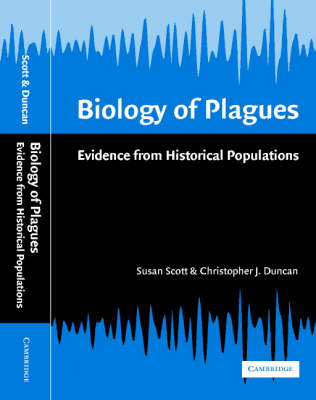
Biology of Plagues
Cambridge University Press (Verlag)
978-0-521-80150-8 (ISBN)
The threat of unstoppable plagues, such as AIDS and Ebola, is always with us. In Europe, the most devastating plagues were those from the Black Death pandemic in the 1300s to the Great Plague of London in 1665. For the last 100 years, it has been accepted that Yersinia pestis, the infective agent of bubonic plague, was responsible for these epidemics. This book combines modern concepts of epidemiology and molecular biology with computer-modelling. Applying these to the analysis of historical epidemics, the authors show that they were not, in fact, outbreaks of bubonic plague. Biology of Plagues offers a completely new interdisciplinary interpretation of the plagues of Europe and establishes them within a geographical, historical and demographic framework. This fascinating detective work will be of interest to readers in the social and biological sciences, and lessons learnt will underline the implications of historical plagues for modern-day epidemiology.
Susan Scott is a research worker in historical demography in the School of Biological Sciences, at the University of Liverpool. Christopher J. Duncan is Emeritus Professor of Zoology also in the School of Biological Sciences at the University of Liverpool.
1. Introduction; 2. Epidemiological concepts; 3. The biology of bubonic plague; 4. The Great Pestilence; 5. Case study: the plague at Penrith in 1597–98; 6. Pestilence and plague in the 16th century in England; 7. Plagues in the 16th century in northern England: a metapopulation study; 8. Plagues in London in the 17th century; 9. Plagues in the provinces in the 17th century; 10. Plague at Eyam in 1665–66: a case study; 11. Continental Europe during the third age of plagues: a study of large-scale metapopulation dynamics; 12. The Plague at Marseilles, 1720–22: an outbreak of bubonic plague? 13. Conclusions; References; Index.
| Erscheint lt. Verlag | 29.3.2001 |
|---|---|
| Zusatzinfo | 18 Tables, unspecified; 121 Line drawings, unspecified |
| Verlagsort | Cambridge |
| Sprache | englisch |
| Maße | 160 x 236 mm |
| Gewicht | 758 g |
| Themenwelt | Geisteswissenschaften ► Geschichte ► Teilgebiete der Geschichte |
| Studium ► Querschnittsbereiche ► Epidemiologie / Med. Biometrie | |
| Studium ► Querschnittsbereiche ► Geschichte / Ethik der Medizin | |
| Naturwissenschaften ► Biologie ► Humanbiologie | |
| Sozialwissenschaften ► Soziologie ► Empirische Sozialforschung | |
| ISBN-10 | 0-521-80150-8 / 0521801508 |
| ISBN-13 | 978-0-521-80150-8 / 9780521801508 |
| Zustand | Neuware |
| Haben Sie eine Frage zum Produkt? |
aus dem Bereich


